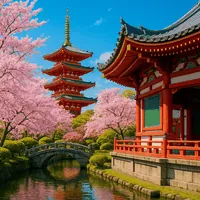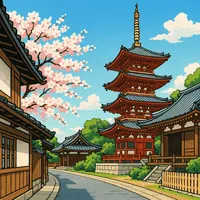Ibaraki in Ōsaka stands out for hosting Ritsumeikan University’s futuristic Osaka-Ibaraki Campus, blending academic innovation with urban convenience. Unlike most commuter cities, it’s uniquely positioned between Umeda and Kyoto, offering lightning-fast access to both. The city also preserves the ancient Sojiji Temple, a rare fusion of samurai-era tranquility and tech-forward living.
Notable points about Ibaraki
- Ibaraki, Ōsaka is uniquely home to the spectacular Ibaraki Kasugaoka Church, designed by architect Tadao Ando, offering a minimalist spiritual experience like no other.
- Unlike more tourist-heavy cities in Japan, Ibaraki blends suburban tranquility with quick urban access, offering a relaxed yet connected vibe rare in Ōsaka Prefecture.
- The best time to visit is late March to early April, when Expo '70 Commemorative Park nearby bursts into color with cherry blossoms and seasonal events.
- Travelers will find Ibaraki more affordable than central Ōsaka or Kyoto, with lower hotel rates and dining prices perfect for mid-range and budget travelers.
- Don’t miss a visit to Sojiji Temple for a peaceful Zen experience, especially during local festivals when the temple grounds come alive with lanterns and food stalls.
- Try the local take on kushikatsu (deep-fried skewers) at family-run shops near Ibaraki Station—crispy, flavorful, and half the price of Dōtonbori’s offerings.
- The JR Tōkaidō Line and Hankyu Kyoto Line make Ibaraki incredibly accessible—ideal for day trips between Kyoto and Ōsaka, with walkable neighborhoods and scenic bike routes.
- Explore the rarely visited Nosegawa Park for serene riverside walks, koi ponds, and local families enjoying hanami picnics—completely free and crowd-free.
- Ibaraki is safe and family-friendly, but English signage is limited—download a translation app and be ready for warm, patient interactions with locals.
- A sunset hike up Mount Atago (Atago-yama) rewards visitors with sweeping views over northern Ōsaka—quiet, romantic, and unforgettable.



